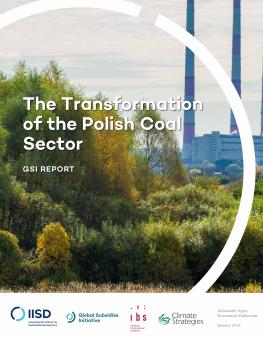
The Transformation of the Polish Coal Sector
Although Poland remains one of the most coal-dependent economies in Europe, there have been significant job losses in mining since 1990 This study reviews some of the policies introduced to mitigate the effects of these losses.
Poland has a strong tradition of coal mining and coal fired power.
Coal was the basis of the country’s industrialization, and today coal fired power still accounts for over 80 per cent of total electricity generation. With a large part of this coal coming from domestic sources, continued use of coal is often viewed as an important strategy in maintaining both energy independence and security. Aside from economics, the strength of the coal unions in Poland, and government ownership interests in both coal mining and the power sector, mean that the industry is central to both political and social discourse.
In spite of these factors, coal mining in Poland has witnessed a massive decline in employment from almost 400,000 miners in 1990 to around 100,000 miners in 2014. Prompted by the economic and social reforms associated with the fall of Communism, these job losses were largely a result of efficiency improvements.
This study considers the policies and strategies that were adopted to help manage the decline in employment.In particular, it focuses on two measures: the Mining Social Package and Special Privileges for Mining Communes. It assesses the success of each of these policies in mitigating the adverse social and economic impacts of the decline of the industry and considers their relevance to the challenges of coal phase out today.
You might also be interested in
G20 Finance Ministerials and World Bank/IMF Spring Meetings: Expert comment
G20 finance ministerials and World Bank/IMF spring meetings will take place this week in Washington. High on the agenda is the need to mobilize trillions of dollars of investment in the transition to clean energy.
IISD Applauds Canada’s Reaffirmation to End Domestic Public Finance for Fossil Fuels in Budget 2024
Today's federal budget announcement delivers new measures to support affordability and reaffirms Canada’s commitments on climate action.
South African Fossil Fuel Subsidies Hit Record Highs as Country's Energy Crisis Deepens
South Africa's fossil fuel subsidies tripled between 2018 and 2023, hitting USD 7.5 billion, up from USD 2.9 billion 5 years earlier, a new report by IISD reveals.
Blackouts and Backsliding: Energy subsidies in South Africa 2023
Blackouts and Backsliding presents the latest energy subsidy data for South Africa.